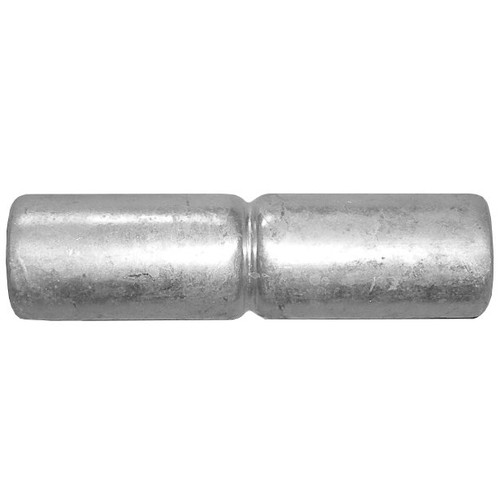Product Description
Chain Link Top Rail Sleeve Expansion Spring — Galvanized, Fits 1-3/8″ & 1-5/8″ Sleeves (Professional Grade)
- Prevents Bowing & Separation — Spring sits inside a top rail sleeve so rails can expand/contract with temperature without buckling or pulling apart
- Chosen by Professionals — Simple, contractor-grade solution for long, sun-exposed runs and projects with windscreens
- Drop-In Design — Slides into the same-size sleeve; compresses as rails push in for a clean, low-profile splice
- Galvanized Steel — Corrosion-resistant finish for outdoor service
- Works with Silver or Color Systems — Use inside galvanized pressed-steel sleeves or color-coated sleeves of matching size
This galvanized expansion spring installs inside a standard top rail sleeve to absorb thermal movement in chain link rails. In hot weather, rails lengthen and can bow; in cold, they shrink and may pull out of short sleeves. Adding a spring at the splice maintains a tidy joint and helps keep the rail aligned season after season. For pass-throughs at line posts, use a line rail (boulevard) clamp instead of a sleeve.
Why Choose This
- Professional finish — Keeps straight runs looking clean by mitigating heat-bow and cold-gap issues
- Field-friendly — No special tools; drops into the sleeve and works automatically
- Versatile — Ideal for long exposures, south-facing rails, tarps/windscreens, and wide temperature swings
- Durable — Galvanized steel spring for reliable outdoor performance
Specifications
| Spring Size (use with Sleeve O.D.) | 1-3/8″ | 1-5/8″ |
| Compatible Sleeve Type | Pressed-steel top rail sleeves (galvanized or color-coated), same diameter | |
| Sleeve Length | 6″ | 6″ |
| Material / Finish | Galvanized steel / Silver | |
| Weight (each) | 0.15 lb | 0.20 lb |
| Typical Usage | Residential chain link sleeves | Commercial chain link sleeves |
Installation
Slide the spring fully into a matching-size sleeve (e.g., 1-3/8″ spring with a 1-3/8″ sleeve). Insert one rail end into the sleeve, then compress the spring slightly as you push in the opposing rail. Center the sleeve over the joint. Where windscreens/tarps are installed or sites are very windy, you may add two 1/4″ self-tapping screws through the sleeve (one per side) to keep the joint locked. For lines that pass through a post, use line rail clamps instead of a sleeve.
Buying Guide
- Choose by rail/sleeve size: Order the spring size that matches your sleeve O.D. — 1-3/8″ or 1-5/8″.
- When to use: Long, sun-exposed runs; areas with large temperature swings; fences with windscreens or tarps that increase wind loading.
- Related parts: Pair with galvanized sleeves or color sleeves; terminate rails at posts with rail end caps (or color equivalents).
- Swedged rails note: Springs are used with sleeved splices. Swedged (tapered) rails join without a sleeve and typically don’t use springs at the joint.
Frequently Asked Questions
- Where does the spring go?
- Inside the top rail sleeve, centered over the splice. It compresses as the rails move with temperature.
- Will this stop my rail from bowing in summer?
- It helps absorb expansion to reduce bowing and helps maintain engagement in winter when rails contract.
- Can I use it with color-coated systems?
- Yes—use the spring inside a color-coated sleeve that matches your rail size.
- Do I still need screws in the sleeve?
- Not always. For windy sites or when using windscreens, two self-tappers through the sleeve can help keep the joint locked.
- Is this for line-post pass-throughs?
- No. For rails passing through line posts, use a line rail (boulevard) clamp.
Comparison
| Option | Strengths | Considerations | Best For |
|---|---|---|---|
| Expansion Spring + Sleeve (this item) | Mitigates thermal bowing/gapping; clean, low-profile splice | Requires sleeve at joint | Long runs, temperature swings, windscreens |
| Standard Sleeve Only | Quick, economical splice | Less compensation for expansion/contraction | Short runs, mild climates |
| Swedged Top Rail | No external coupler; very clean joint | Not compatible with springs at the joint | New builds using swedged stock |
Not sure if your project needs expansion springs or standard sleeves? Contact us and we’ll help you plan a professional-grade solution that stays straight and secure year-round.







